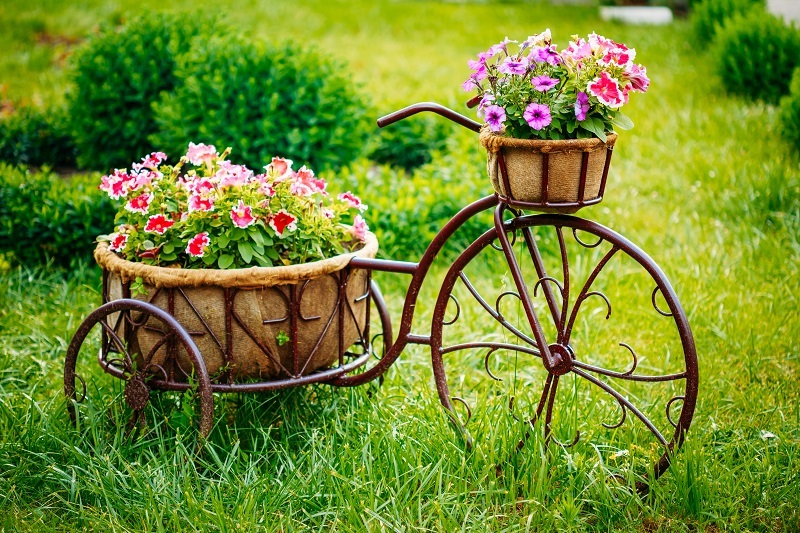Poinsettia Preservation Tips for a Lasting Impression
Posted on 01/07/2025
Poinsettia Preservation Tips for a Lasting Impression
The bright, colorful poinsettia is synonymous with the festive season, gracing homes, offices, and public spaces around the world. Yet, many people find their vibrant beauty fleeting, wondering how to make these iconic plants last well beyond the holidays. In this comprehensive guide, we will delve deep into poinsettia preservation strategies, offering actionable tips and expert insights, so your poinsettia delivers a lasting impression all year long.
Understanding the Poinsettia: History and Significance
Before discussing poinsettia care and preservation, it's important to know what makes the plant special. Native to Mexico, the poinsettia (Euphorbia pulcherrima) has become an enduring symbol of the holiday season, largely because of its striking red, pink, white, or even marbled bracts - which are sometimes mistaken for flowers. The true flowers are the small, yellow clusters at the plant's center.
Legend ties the poinsettia's popularity to a Mexican Christmas story in which a humble child's offering of weeds was transformed into beautiful, crimson blooms for baby Jesus. Today, these plants carry a rich cultural legacy and are a thoughtful gift or decorative accent. By preserving poinsettias, you extend the joy and symbolism they bring far beyond the winter months.

Choosing a Healthy Poinsettia: The First Step in Preservation
The foundation for long-lasting poinsettias starts with selecting the right plant. Here's what to look for:
- Bright, vibrant bracts: Choose poinsettias with fully colored, unblemished bracts that are not drooping or curling.
- Healthy foliage: Leaves should be deep green, perky, and free of yellowing or spots.
- Intact cyathia: The tiny, yellow, button-like flowers at the center should be present and not shedding, indicating freshness.
- No root rot: Gently check soil moisture; it should be slightly damp, never soggy or bone dry.
- Well-branched plant: Fuller, symmetrical plants often last longer than leggy ones.
Always purchase from respected nurseries, garden centers, or florists, and avoid buying poinsettias exposed to cold drafts in store displays.
Poinsettia Preservation Tips for Maximum Longevity
1. Proper Placement
Location is crucial when it comes to poinsettia preservation. These plants thrive in bright, indirect light. A few guidelines include:
- Place your poinsettia near a sunny window but away from direct sunlight, which can scorch the leaves.
- Ensure adequate air circulation without subjecting the plant to cold drafts, heat registers, or sudden temperature changes.
- Optimal temperature range: Keep the room between 65?F and 72?F (18?C to 22?C) during daytime and slightly cooler at night, but never below 50?F (10?C).
Optimal placement limits stress and encourages rich color retention, key elements for making your poinsettia's impression last long.
2. Watering Techniques for Poinsettia Preservation
Improper watering is the most common cause of early poinsettia decline. Here's how to get it right:
- Water only when the top inch of soil feels dry to the touch.
- Use room-temperature water and avoid letting the plant sit in excess drainage water, as poinsettias are prone to root rot.
- Remove any decorative foil from the pot base or poke holes to allow proper drainage.
- During the active blooming season, check soil moisture every few days, especially in heated rooms.
Consistency in moisture--never soggy, never parched--is the key to poinsettia longevity.
3. Humidity and Air Quality Considerations
Poinsettias hail from subtropical climates and benefit from moderate humidity. If your indoor air runs dry during winter, try these methods:
- Group your poinsettia with other plants to create a humid microclimate.
- Set the plant pot atop a tray lined with pebbles and water (water should be below the pot base), boosting moisture through evaporation.
- Consider using a humidifier in rooms where poinsettias reside.
Poinsettia color vibrancy and leaf retention improve in environments with 40-60% humidity.
4. Feeding and Fertilization
During the bract-coloring (bloom) stage, fertilizer is not necessary. However, after the holidays if you wish to keep your poinsettia thriving, consider these tips:
- Once new growth appears (typically in late winter), feed every 3-4 weeks with a balanced, all-purpose houseplant fertilizer (such as 10-10-10), applied at half strength.
- Never fertilize dry soil; water first, then feed.
- Cease fertilizing when preparing your poinsettia for its rest period (see section below).
Proper nutrition is central to the long-term preservation of poinsettias.
5. Post-Holiday Poinsettia Care & Re-Blooming
Keeping your poinsettia alive year-round and prompting it to re-bloom the next holiday season is entirely possible with a little dedication:
-
Late Winter/Early Spring:
Cut back the plant to about 6-8 inches tall once bracts begin to fade. Keep watering regularly and maintain in bright, indirect light. -
Spring:
When new growth appears, repot the plant if roots are dense, and resume fertilizing. -
Summer:
Move the poinsettia outdoors after the last frost, acclimating it gradually to avoid sunburn. Place in partial shade and pinch back stems twice to encourage bushiness. -
Early Fall:
Bring the plant back indoors before temperatures dip below 55?F. Continue regular care. -
Color Initiation (October-December):
The key to poinsettia re-blooming is photoperiodism--these plants require 14-16 hours of complete darkness each night for 8-10 weeks to trigger color change. Place your poinsettia in a dark closet or cover with a light-proof box every night, while ensuring bright light during the day. -
Holiday Season:
If you've followed these steps, colorful bracts should return for a spectacular seasonal display.
Common Mistakes in Poinsettia Preservation (and How to Avoid Them)
- Overwatering or underwatering: Untimely wilting, leaf drop, or root rot can all cut your poinsettia's life short.
- Exposure to drafts: A sudden cold draft from an open door or window can cause leaves to yellow and drop.
- Ignoring light needs: Insufficient light causes bracts to fade; direct sunlight scorches leaves.
- Improper temperature: Extreme heat or cold disrupts blooming and vitality.
- No dormant period: Skipping the rest phase weakens the plant and leads to disappointing displays next year.
Avoiding these pitfalls ensures maximum poinsettia preservation and a healthy plant year after year.
Advanced Poinsettia Preservation Techniques
Propagation
Did you know you can expand your collection by propagating your poinsettia? Here's how:
- Take cuttings from healthy stems in late spring or early summer (each cutting should have at least 3-4 leaves).
- Dip the cut end in rooting hormone.
- Plant cuttings in a moist starter mix, covering with a plastic bag or dome to maintain humidity.
- Keep in warm, bright but indirect light until roots develop, then handle as mature plants.
This method not only extends the life and impact of your treasured poinsettia but also allows you to create meaningful gifts for others.
Creative Ways to Enjoy Preserved Poinsettias
Even as the live plant ages, you can still cherish and showcase its unforgettable aesthetic:
- Pressed Poinsettia Art: Dry bracts and leaves between parchment and heavy books, then use them in crafts or frame as art.
- Dried Arrangements: Carefully air dry whole stems upside-down, then combine with other botanicals in a winter arrangement.
- Potpourri: Add dried bracts to a holiday-scented blend for seasonal fragrance and color.

FAQs on Poinsettia Preservation
-
Are poinsettias poisonous?
Contrary to popular myth, poinsettias are not highly toxic but can cause mild irritation if ingested. Keep them out of reach of pets and children. -
How long does a poinsettia last indoors?
With proper care, a poinsettia can thrive for months, and with special attention, it can return year after year. -
Can poinsettias be planted outdoors?
In warm climates (USDA Zones 9-11), poinsettias can be planted outside as perennials. In cooler areas, keep them as houseplants.
Conclusion: Make Your Poinsettias Last and Impress
To sum up, ensuring lasting poinsettia enjoyment hinges on thoughtful care, correct environmental conditions, and strategic seasonal maintenance. By choosing a healthy plant, providing proper light, watering attentively, maintaining humidity, feeding appropriately, and respecting its natural cycles, you can impress guests and delight your family with a vibrant poinsettia for far longer than just one holiday season.
For more guides, inspiration, and expert advice on holiday plant care and poinsettia preservation tips, stay tuned and share your poinsettia success stories!
Latest Posts
Exquisite Bouquets for a Fabulous Birthday Surprise
How Does Your Birth Flower Mirror Your True Self
Poinsettia Preservation Tips for a Lasting Impression





